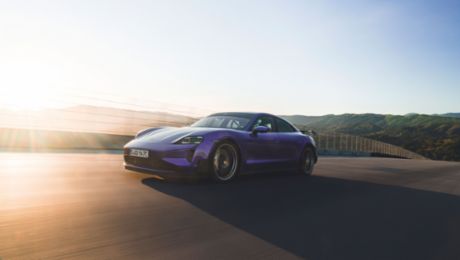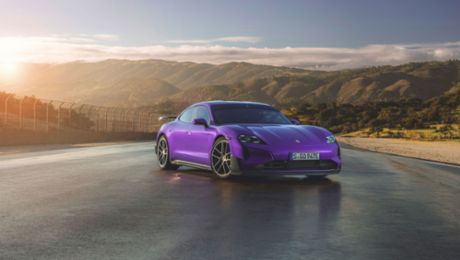Ever since lap records in electric cars first started being set, critics have argued that the quickest times are not reproducible. Thermally, these fast laps are a gruelling challenge for the entire drive system. High-voltage batteries, electric motors, brakes and tyres cannot withstand the continuous load, according to some. Thermal loads from continuous current could cause serious problems for the rotor, stator and the like.
Lars Kern was therefore keen to test the proposition. The Porsche development driver is neither for nor against any type of drive system. “I look at things in a very matter-of-fact way and evaluate them according to their performance potential. Exploring that excites me,” says the 37-year-old.
The test: fast laps in Shanghai
The lap record in Shanghai has just been set and the track is still a bit wet when Kern drives back out onto the Formula One circuit. The objective: five laps in a row, each 10 seconds slower than the record that has just been posted.
The HV battery shows a charge level of 94 per cent. Thanks to the standard Track Mode function, the ambient temperature for the electrons has cooled down to 12 degrees. This means that the stroke is larger before the power storage unit starts to degrade due to temperatures in excess of 50 degrees Celsius, reducing power output to prevent the affected components from ageing at an accelerated pace. The standard Taycan Turbo GT is fitted with optionally available Pirelli Trofeo RS tyres, which are suitable for occasional track driving due to their performance-focused characteristics.
Kern sprints across the start/finish for the first time. The stopwatch is running. The first lap is just over 2:20 minutes. Laps two to five, each just below or above. Target achieved. Time to wrap it up. Done. But instead of turning into the pit lane as discussed, the swift Swabian just keeps driving. Again he clocks in at about 2:20 minutes. Surely now he’s done? Apparently not. Lap seven is in range, too. Laps eight and nine as well.
Endurance and performance
The pit crew from Weissach, Zuffenhausen and Meuspath follow the drive with rapt attention. Only after 10 laps, or almost 55 kilometres, does Kern take his foot off the accelerator pedal and slowly roll it home. He was still at 2:28 minutes on the 10th lap, averaging exactly 2:20 minutes per lap over the entire distance. After the cool down lap, the Taycan’s curved display still shows a charge level of 15 per cent. Under these circumstances, tyres, brakes and PSM motors could have tolerated even more.
Back in the pits, the mood is euphoric. But Kern keeps his cool: “I knew that it had more than five laps in it, and I just kept going,” he says. “The Taycan is simply an unbelievably good electric sports car.”



